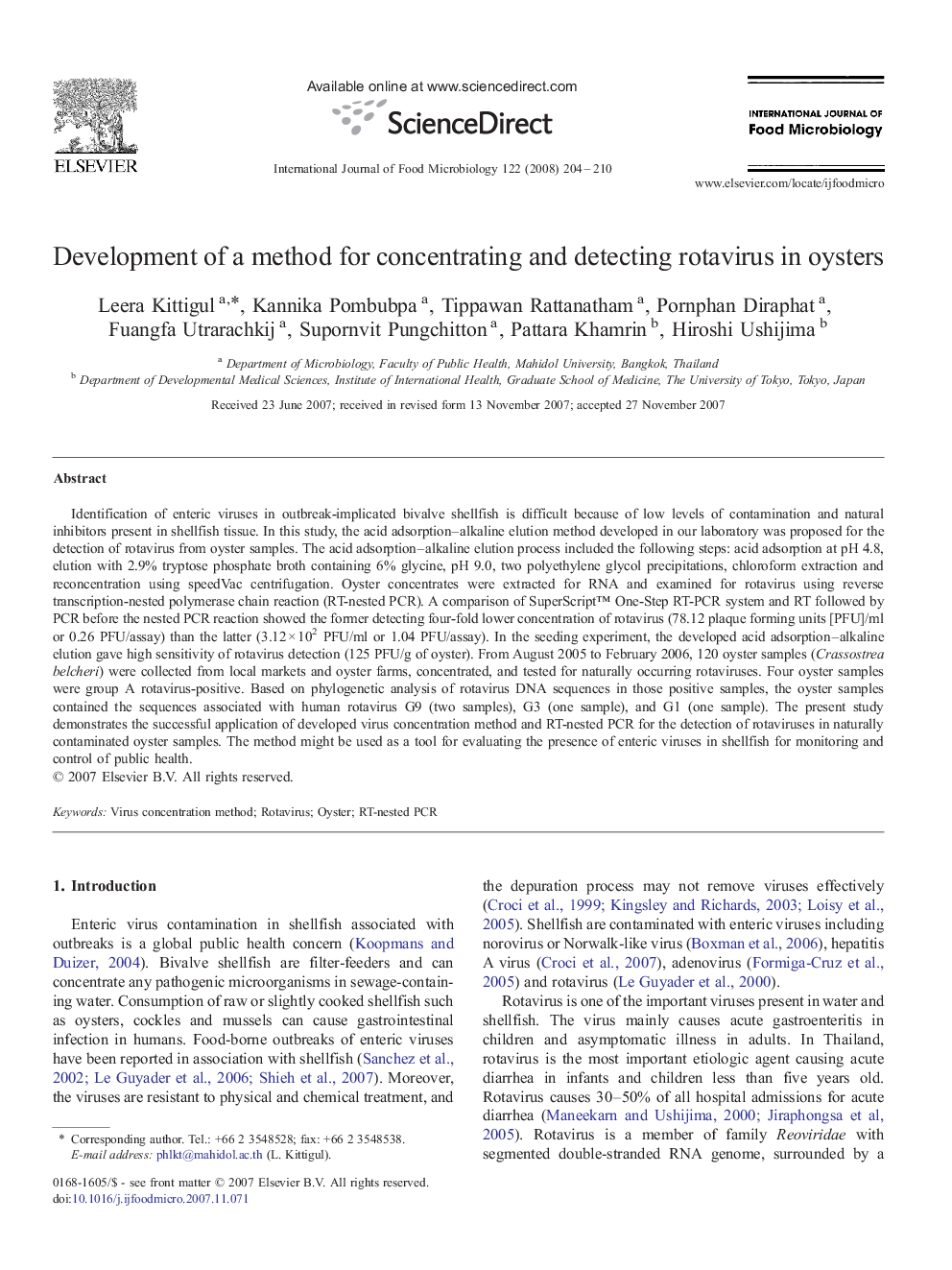| Article ID | Journal | Published Year | Pages | File Type |
|---|---|---|---|---|
| 4369533 | International Journal of Food Microbiology | 2008 | 7 Pages |
Identification of enteric viruses in outbreak-implicated bivalve shellfish is difficult because of low levels of contamination and natural inhibitors present in shellfish tissue. In this study, the acid adsorption–alkaline elution method developed in our laboratory was proposed for the detection of rotavirus from oyster samples. The acid adsorption–alkaline elution process included the following steps: acid adsorption at pH 4.8, elution with 2.9% tryptose phosphate broth containing 6% glycine, pH 9.0, two polyethylene glycol precipitations, chloroform extraction and reconcentration using speedVac centrifugation. Oyster concentrates were extracted for RNA and examined for rotavirus using reverse transcription-nested polymerase chain reaction (RT-nested PCR). A comparison of SuperScript™ One-Step RT-PCR system and RT followed by PCR before the nested PCR reaction showed the former detecting four-fold lower concentration of rotavirus (78.12 plaque forming units [PFU]/ml or 0.26 PFU/assay) than the latter (3.12 × 102 PFU/ml or 1.04 PFU/assay). In the seeding experiment, the developed acid adsorption–alkaline elution gave high sensitivity of rotavirus detection (125 PFU/g of oyster). From August 2005 to February 2006, 120 oyster samples (Crassostrea belcheri) were collected from local markets and oyster farms, concentrated, and tested for naturally occurring rotaviruses. Four oyster samples were group A rotavirus-positive. Based on phylogenetic analysis of rotavirus DNA sequences in those positive samples, the oyster samples contained the sequences associated with human rotavirus G9 (two samples), G3 (one sample), and G1 (one sample). The present study demonstrates the successful application of developed virus concentration method and RT-nested PCR for the detection of rotaviruses in naturally contaminated oyster samples. The method might be used as a tool for evaluating the presence of enteric viruses in shellfish for monitoring and control of public health.
